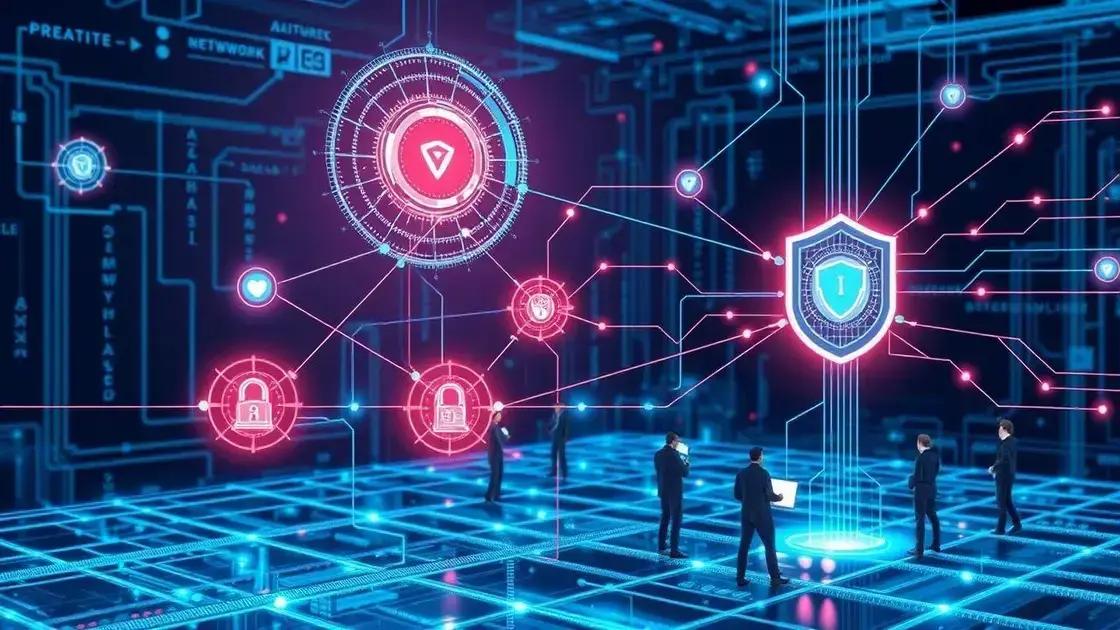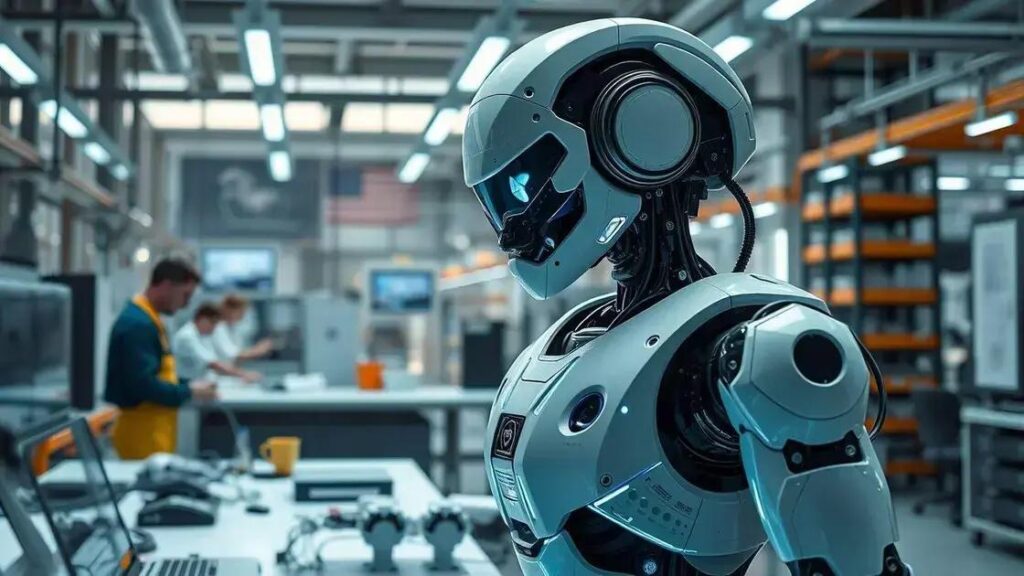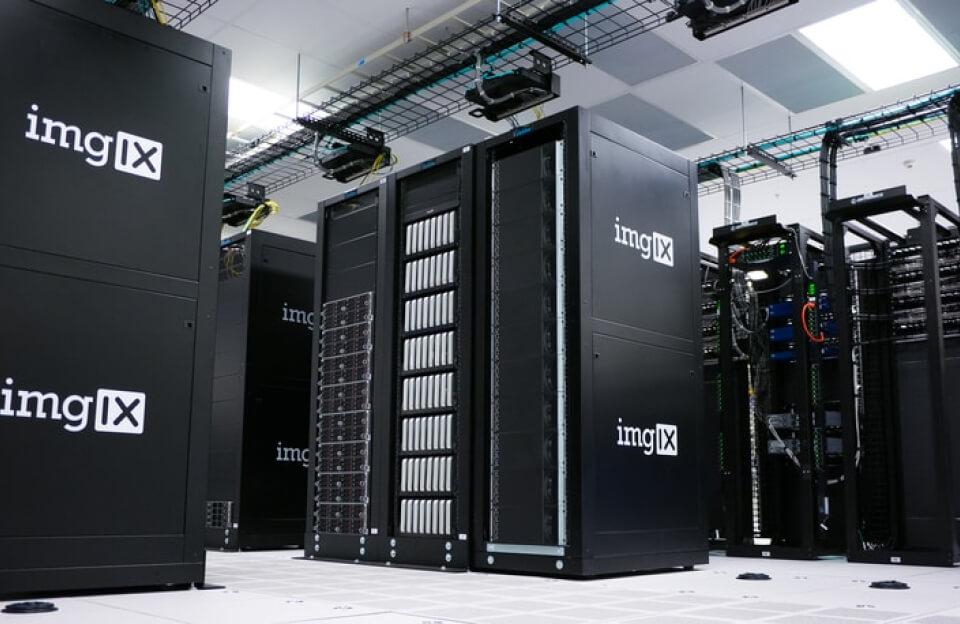Emerging technologies like polyfunctional robots and AI-driven cybersecurity are transforming industries, increasing efficiency, and improving security; proactive strategies are essential for businesses to thrive in this evolving digital landscape.
Emerging technologies are reshaping how we do business today. Have you considered how robotics and AI can enhance operational efficiency?
Impact of polyfunctional robots on various industries

Polyfunctional robots are revolutionizing industries by automating complex tasks and improving efficiency. Their adaptability makes them suitable for diverse applications, from manufacturing and logistics to healthcare and agriculture.
Manufacturing and Logistics
In manufacturing, these robots handle assembly, welding, and painting with precision and speed, reducing production time and errors. Logistics benefit from automated warehousing, order fulfillment, and delivery systems, optimizing supply chains.
Healthcare
Surgical robots assist surgeons with minimally invasive procedures, increasing accuracy and reducing recovery times. In hospitals and care facilities, robots handle tasks like medication dispensing and patient monitoring, freeing up human staff for more personal care.
Agriculture
Agricultural robots perform tasks such as planting, harvesting, and crop monitoring, improving yields and reducing labor costs. They can work autonomously in diverse environments, adapting to changing conditions.
Challenges and Future Trends
While polyfunctional robots offer numerous advantages, challenges remain. The initial investment can be substantial, and integrating these robots into existing workflows may require modifications and retraining. However, future trends suggest increasing affordability and accessibility, along with advanced capabilities like AI integration for even greater efficiency and adaptability.
The future of preemptive cybersecurity in business

Preemptive cybersecurity is shifting from reactive measures to proactive strategies focused on threat prevention. This involves anticipating potential attacks and implementing safeguards before vulnerabilities are exploited.
AI-Driven Threat Detection
Artificial intelligence plays a crucial role in identifying and neutralizing threats before they cause damage. AI algorithms analyze vast amounts of data to detect anomalies and predict potential attacks, enabling businesses to respond quickly and effectively.
Zero Trust Architecture
Zero trust security models assume no implicit trust, verifying every user and device attempting to access the network. This approach significantly reduces the impact of breaches by limiting access and isolating compromised systems.
Automation and Orchestration
Automating security tasks such as vulnerability scanning, patch management, and incident response frees up security teams to focus on strategic initiatives. Orchestration tools streamline security operations, enhancing efficiency and reducing response times.
Employee Training and Awareness
Human error remains a significant vulnerability. Comprehensive employee training programs educate staff about phishing scams, malware, and other social engineering tactics, strengthening the overall security posture of the organization.
Emerging Technologies
Blockchain technology offers enhanced data security and tamper-proof records. Quantum-resistant cryptography prepares businesses for the potential threat of quantum computing to existing encryption methods. These advanced technologies are vital for long-term cybersecurity resilience.
In conclusion, the convergence of emerging technologies and advanced cybersecurity strategies is reshaping the business landscape. Polyfunctional robots are boosting efficiency across various sectors, while proactive cybersecurity measures are crucial for mitigating future threats. Embracing these advancements is not merely an option, but a necessity for businesses aiming to thrive in the dynamic digital world. By understanding the impact of these technologies and implementing robust security protocols, businesses can unlock new opportunities for growth while safeguarding their valuable assets.
FAQ – Frequently Asked Questions about Emerging Technologies and Cybersecurity
What are polyfunctional robots, and how are they impacting various industries?
Polyfunctional robots are automated systems capable of performing multiple tasks. Their adaptability is transforming manufacturing, logistics, healthcare, and agriculture by increasing efficiency, precision, and safety.
What is preemptive cybersecurity, and why is it important for businesses?
Preemptive cybersecurity focuses on preventing attacks before they occur, rather than reacting to them after damage is done. This proactive approach uses AI, zero-trust architecture, and automation to strengthen overall security.
How can AI enhance threat detection and response in my business?
AI algorithms analyze vast amounts of data to identify anomalies and predict potential cyberattacks. This allows for quicker responses and more effective neutralization of threats before they cause significant harm.
What is a zero-trust architecture, and how does it improve security?
Zero trust assumes no implicit trust, verifying every user and device before granting access. This limits the impact of breaches by controlling access and isolating compromised systems.
What role does employee training play in preemptive cybersecurity?
Employee training is crucial for combating social engineering attacks like phishing. Educated employees are less likely to fall victim to scams, reducing the risk of security breaches.
What emerging technologies are shaping the future of cybersecurity?
Blockchain technology offers enhanced data security, while quantum-resistant cryptography is preparing businesses for future quantum computing threats. These advancements are essential for long-term security.

Gabriel de Jesus is a journalist specialized in digital media and the founder of the blog Guia da Notícia. Passionate about clear and accessible information, he launched the platform in 2016 to deliver reliable news on politics, economics, society, and culture. With a direct style and simple language, Gabriel has turned the blog into a regional reference for independent journalism.



